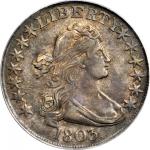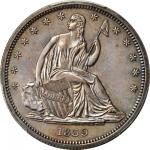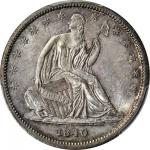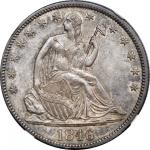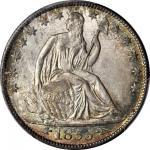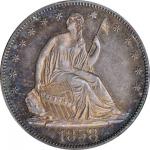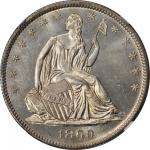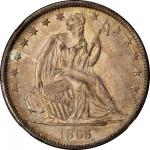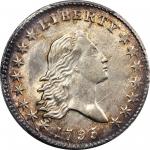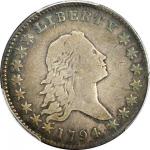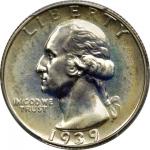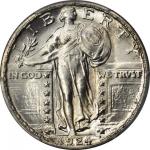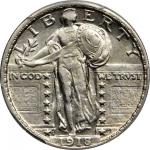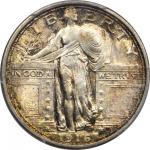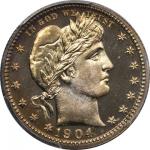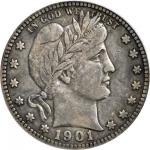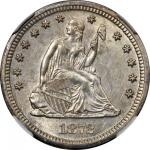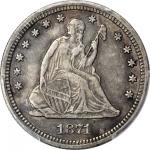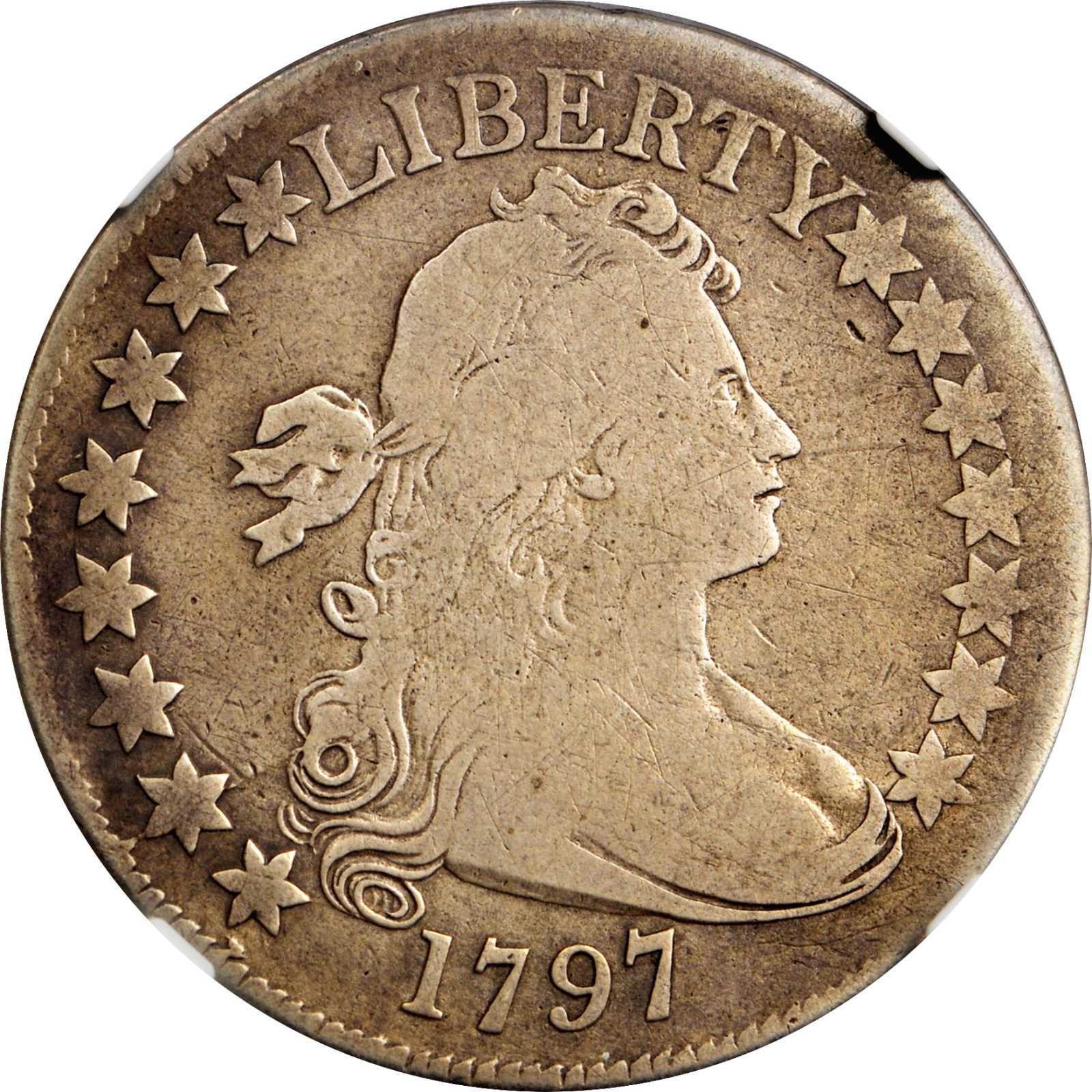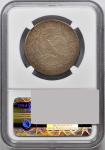A delicate bronze iridescence overlays the slate gray surfaces of this handsome rarity. The complexion attests to wholesome preservation in all respects, remaining smooth to the naked eye and free from noteworthy blemishes under a glass. The motifs are pleasantly bold and well defined for both the type and the assigned grade. The die crack at star 1 on the obverse that began in the Overton 101 pairing has progressed to Libertys hair curl, also joining together the adjacent dentils below into one pyramidal mound. A notion of softness is apparent at the upper right on the obverse and at the corresponding lower right reverse, though this is characteristic to the Overton 102 die pairing. The faintest ghosting of Mint luster is apparent around the reverse devices under optimal lighting, setting aglow the final incarnation of the majestic Small Eagle motif as seen on the half dollar denomination. The 1797 half dollar is a profoundly enigmatic issue whose intrigue is only overshadowed by its rarity. Echoing the symbolism portrayed by the flag of the United States, the earliest coins of the U.S. Mint depicted a star count that tried at best to mirror the number of states belonging to the Union at the time of striking. Fittingly so, the half dollars of 1794 and 1795 display 15 stars on the obverse-- a number justified by Kentuckys admission on June 1st 1792. In anticipation of 1796s half dollar mintage, officials prepared a 1796-dated 15-star die for use, though no half dollars were struck in said year. However, by the time mintage resumed in the beginning of 1797, Tennessee had already joined the Union on June 1st of 1796 and a 16-stars motif was appropriate. Never to be wasteful, the Mint employed this wrongly dated and wrongly starred obverse, eventually transitioning to a 1796-dated 16-star obverse by some other combination of misguidance. Then, most curiously, a third die was created to finish out the 1797 half dollar production year; properly dated 1797, though ornamented with just 15 stars on the obverse. Several theories and conjectures have emerged to explain how this blundered regression might have occurred, though whether terribly complex or astoundingly simple, the error in star-count for the 1797 Draped Bust half dollar has left numismatic scholars scratching their heads for the past two centuries. <br />The second anomaly of the 1797 Draped Bust half dollar can be observed on the opposite side of the coin and is a characteristic carried over from the previous, yet it would be omitted for the next decade of half dollar production. While the denomination, as represented by a fraction, is a familiar sight to early copper enthusiasts of the era, silver and gold coins bore no reference to their monetary worth apart from an elusive mention on the coins third side--the edge. For the precious metal issues of 1794 and 1795, size and weight were the primary distinguishing characteristics between denominations, and while these tactile references are perhaps adequate enough for experienced merchants, they do not assert the confidence that a stated, visual denomination conveys. Researcher Steve Tompkins speculates that it was the introduction of the quarter in 1796 that prompted the inclusion of the fractional denomination on the reverse of the half dollars of the same vintage. This notion of deliberateness is substantiated by the fact that once the initial fractioned-reverse was retired, it was replaced by another reverse exhibiting a denominated fraction, dispelling the likelihood that the feature was added in error. That lone replacement die was used to coin the balanced of 1797-dated halves, and half dollar production did not again resume until 1801, though by then the new Heraldic Eagle reverse motif had done away with a stated denomination, leading numismatic scholars further ponder its inclusion in the first place.The incestuous die marriages and somewhat ambiguous Mint records pertaining to the 1797 half dollar will forever leave its true rarity in question. The present piece represents an exciting opportunity to become part of that enchanting mystery and perpetual adventure; a significance that will surely not be lost once the lot crosses the auction block! <br />,,PCGS# 6060. NGC ID: 24EC.,,

